Sheep can be raised for their wool, meat, and milk. Lambs produce high-quality meat and young sheep under one year of age. Sheep are sheared once a year to produce wool. Sheep are bred for two main purposes: producing high-quality or special wool and producing high-quality lean meat (lamb). In addition, some sheep are bred specifically for milk production. Below are 16 key principles for good management tips for the success of the sheep farming business.
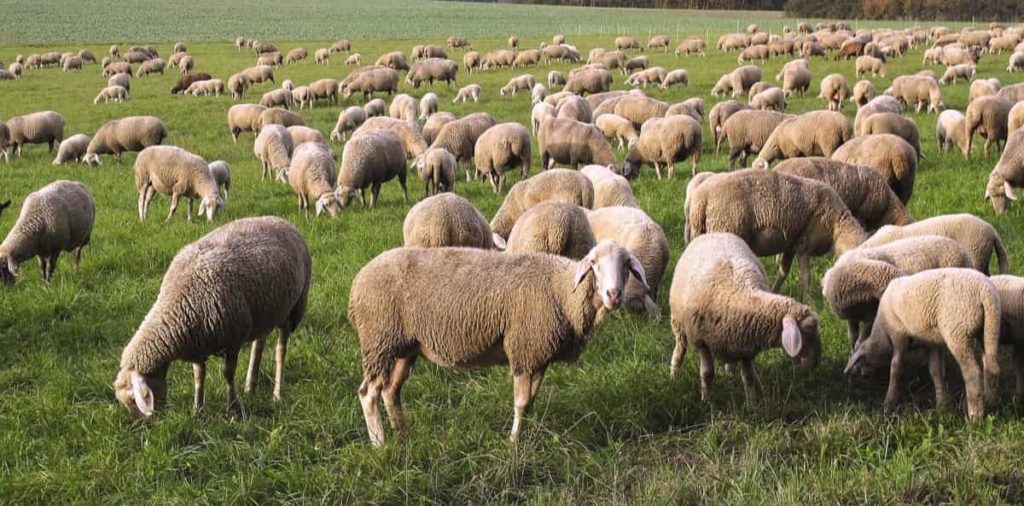
16 key rules for effective sheep farm management
Effective sheep management importance
Sheep rearing is indeed a profitable business. Anyone can start raising sheep and other livestock with a small business investment. Generally, sheep farming falls under cattle breeding. A business plan is the foundation of a successful farming operation.
Sheep farming is incredibly labor intensive. When you embark on such endeavors, you don’t have to worry about the financial stability of your business. Keeping your production costs under control is necessary if you want to operate for a healthy financial profit.
Simple ideas to increase your profit margins in sheep farming
- Sheep are easy to handle compared to cows, horses, and pigs.
- Sheep do not need perfect pasture land. They happily feed on brush, grass, and shrubs that grow in poor soil.
- Sheep manure will fertilize the soil. A former sheep pasture is a wonderfully fertile place to grow crops. You’ll need to consider your local climate conditions, so ask about what other farmers in the area are raising breeds.
- Make sure you buy sheep directly from the person who raised them. Look at the herd the lamb comes from, and talk to the farmer about the animal and its parentage history.
- Sheep are ruminant animals that mainly eat fresh grass and hay. However, they can thrive if given nothing but good pasture grass, salt, vitamin and mineral supplements, and freshwater. Add a mix of grass, brush, and trees. In general, one acre of good quality pasture can support four sheep.
- Decide how many sheep you will buy – Where you are, and the productivity of your land will determine how many sheep you can raise. Additionally, if you want to profit from sheep, you must consider market prices and potential returns. It isn’t easy to profit from small-scale sheep farming in many places. It becomes more complicated when the environment involves extreme cold, and additional feed and shelter must be provided for the sheep.
- The best sheep fence is a plain or woven wire non-electric fence. You use electric mesh fencing for temporary paddocks. Rotating the sheep to different paddocks keeps them on fresh pasture.
In case you missed it: Zero Grazing Sheep Farming: How to Start, Business Plan for Beginners
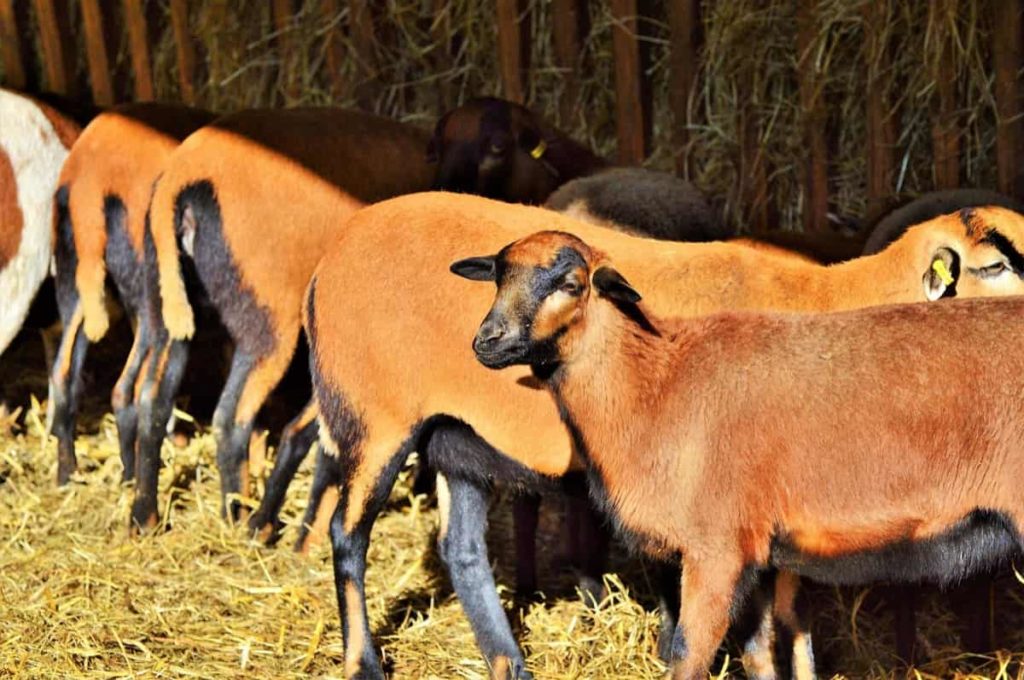
Some effective house management practices for sheep farming
- Proper housing construction is one of the most important aspects of sheep farm establishment. You should provide housing that can protect the sheep from adverse weather conditions.
- You can provide a simple shed to keep the sheep. However, it would help if you shaded in an elevated area to prevent water stagnation. Additionally, you can grow fodder trees around the shade and use the area as pasture. Finally, there should be adequate ventilation throughout the house.
- East-west orientation with generous provision for air movement/air movement to dry the floor is suitable for a comfortable home. However, the most suitable is the thatched roof due to its low cost and durability. In addition, you can use corrugated asbestos sheets for organized farms to reduce recurring costs and be more durable.
- Typically, an adult sheep requires about 20 square feet of floor space. For example, if you plan to keep 10 sheep, you must build a house 10 feet long and 20 feet wide. Keep the ceiling at least 6 feet above the floor.
Management practices for reducing production cost
- Provide adequate forage (hay, silage, or pasture). Provide adequate nutrition (pasture, high-quality forage, or grain) during the last third of pregnancy and until weaning.
- Provide adequate nutrition (pasture, high-quality forage, or grain) to growing lambs.
- Sheep can be raised in various temperate climates, including arid zones near the equator and other tropical regions. Farmers build fences, housing, shearing sheds, and other facilities on their property, such as water, feed, transport, and pest control.
- Most farms are managed so that sheep graze, sometimes under the control of shepherds or sheepdogs.
Key rules for selecting sheep breeds
Farmers can choose from various breeds suited to their region and market conditions. Buy quality breeds from either reputable breeders or responsible farmers. Generally, you can find many breeds of sheep all over the world. However, not all those species are suitable for cultivation in all regions. So, you have to buy varieties according to the agro-climatic condition of your location.
You will also need to choose the breed per the specific demand. Some sheep breeds are suitable for commercial meat production, and some breeds are suitable for wool production. Therefore, choose the appropriate breeds according to your desired production objective. Selective breeding is selecting the traits you want and breeding animals to produce more traits in the offspring.
The success of sheep production enterprises largely depends on the productivity of the entire flock. Good breeding animals should be selected for starting or expanding purebred or crossbred sheep farms. The best sheep breeds for wool and meat are;
| Gaddi Sheep | Merino |
| Deccani Sheep | Leicester Long-wool Sheep |
| Mandya Sheep | Lincoln sheep |
| Nellore Sheep | Dorset sheep |
| Marwari Sheep | Turcana |
| Coimbatore Sheep | Dorper sheep |
| Vembur Sheep | Tsigai |
| Chennai Red Sheep | Hampshire sheep |
In case you missed it: How this Farmer Made 5 Lakh Profit from Sheep Farming – A Success Story
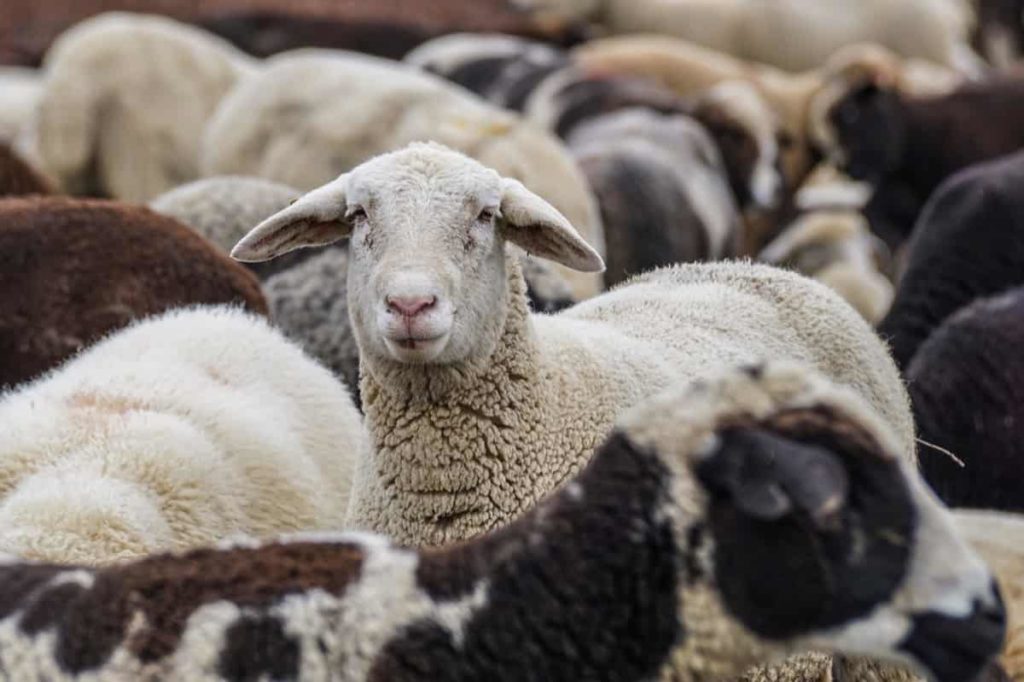
Key rules for increasing sheep production
- Your efforts deserve a good return
- Don’t cut corners on nutrition
- Maximize the growth of surplus lambs
- Consider selling first
- Consider alternative bedding options
- Get your flock out of winter
- Keep good records
Ways to help sheep growth targets
Identify a location – It’s a good idea if you already have your location. Otherwise, you will want to select a location to set up the farm. The area required for sheep farming depends on the size of the farm and the population of livestock you want to keep on your farm.
In general, location plays an important role in the overall success of your sheep farm. Ensure the area is clean enough and has a clean water supply. Additionally, check the availability of adequate vegetables and convenient transport facilities. Also, do not set up a farm in a location that is too far from the local market.
The traditional way to make money from sheep is to raise your sheep and then sell the lambs. You can take sheep to the market where other farmers and slaughterhouses will buy them and sell them privately if you have contacts.
Effective reasons why you can earn profit from sheep farming
- Firstly, you can start a business with a small investment and space.
- The business requires less labor for day-to-day maintenance and upkeep. You can run the sheep farm with less labor investment. Sheep often give birth to young. So, you can build a large size herd in a short time.
- Sheep require less space to live. You can even raise sheep with other livestock animals. Also, you don’t need to build expensive sheep houses. Therefore, it allows you to maintain your cost in the initial period.
- Sheep eat a variety of plants. So you don’t need to provide high-quality feed all the time. The main key to feeding sheep is to ensure good quality pasture. Poor pasture should be supplemented with hay, specific pellet diets, and salt lick blocks. When the sheep cannot graze, such as in winter when snow on the ground, you will be required to feed the sheep daily, it is time-consuming, so consider this possibility if you are not farming full-time.
- Sheep are very tough animals. Sheep can adapt to almost all types of environments. Therefore, you can raise sheep in various temperate climates, including arid regions.
- Protein has a huge impact on production and reproduction. Inadequate protein levels can lead to decreased appetite, reduced food intake leading to poor growth, poor muscle development, and reduced reproductive performance. Very low levels of protein cannot sustain rumen microbes.
- Finally, you have a high market demand for sheep products such as meat, wool, and milk. Therefore, sheep farming is a commercially profitable business for entrepreneurs who want to start a livestock business.
Effective rules for maintaining a sheep farm
Fencing – Sheep can be managed with multiple or a combination of different types of fencing. It is important to not only keep sheep in the field but also consider keeping predators such as coyotes or wolves out. Woven or high tensile electric fences are common for frame fencing.
High tensile electric fences can electrify some or all of the wires, increasing predator control and livestock management. Internal fencing can be temporary or permanent. Temporary fencing is also a useful tool that can create flexible, multi-sized grazing areas for use at different locations throughout the grazing season.
Water systems – Water is the essential nutrient in livestock grazing systems. Sheep need clean, good-quality water. Poor water quality can reduce animal performance, impair reproduction and cause livestock mortality. Water must be tested if it is suitable for animal health and welfare.
Sheep drink 8 to 12 liters of water per day. They will walk about 1.5 miles (2.4 km) to the water but often will not travel more than 2.5 miles (four km) to reach the water. Sheep have less access to drinking water from dugouts than cattle. Direct access to dugouts and natural water sources increases the risk of water contamination and reduced water quality. Water can be delivered from wells to pastures through pipelines, permanent or temporary solar water systems, or water hauling.
Key factors for feed management that affect profitability
- Although sheep primarily eat pasture roughage, they are sometimes fed supplemental feed, such as corn and hay. Sheep require water and energy (carbohydrates and fat) for optimal growth and production.
- For best results, you should provide the proper dosage. In addition, you will need to provide food according to gender and age. Good quality hay or stored forage is a high-yielding forage for your sheep farm.
- There are several strategies to reduce feed costs. No single feeding program is guaranteed to be more profitable. Some producers will be more profitable raising sheep primarily on a forage diet, while others will be successful by feeding plenty of grain and by-products.
In case you missed it: Common Mistakes in Sheep Farming: For the First Time Sheep Owners
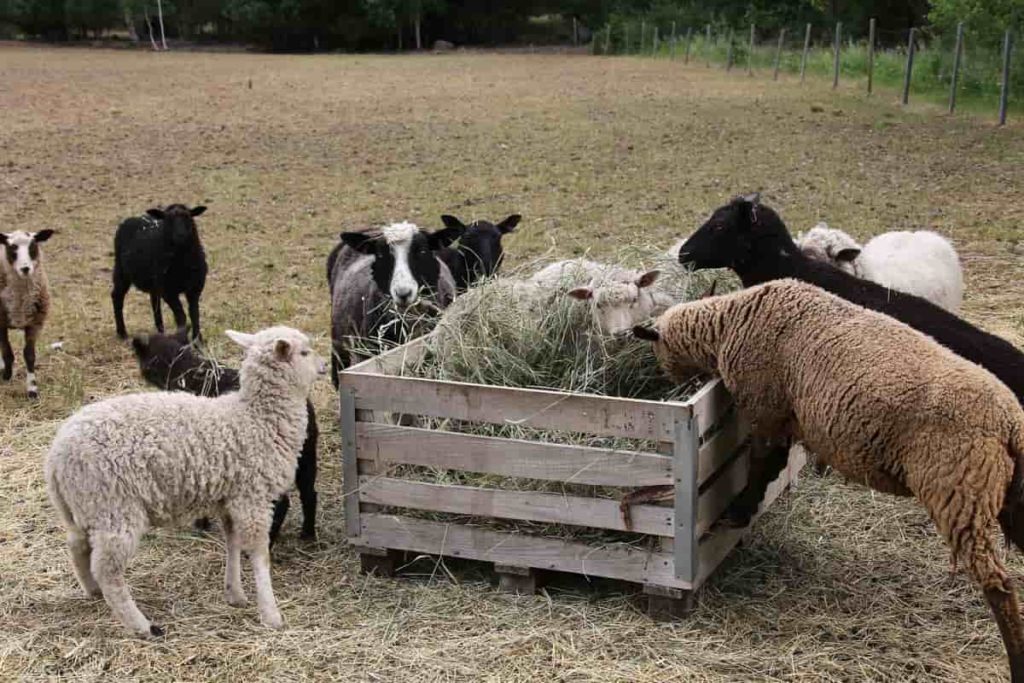
Tips for putting a healthy weight on sheep
- Monitor your lamb closely, weighing it weekly. If the lamb is getting smaller, it might be a good idea to consider why. You may need to change your housing facilities to give your sheep more space, change the amount or composition of the feed, or treat a particular health concern.
- In addition to monitoring the lamb’s weight to ensure its gaining, it’s also a good idea to note when a lamb may get too big. It may also indicate a health problem, and you may need to start a diet.
- When running your sheep on pasture, rotate them often and use high-quality forage. Some of the best crops include leguminous grass silage, hay, corn silage, and alfalfa.
- You may also consider planting species suitable for sheep grazings, such as garden grass, tall fescue, timothy, and perennial ryegrass.
- Take care of your sheep’s health before you start worrying about why they are not gaining weight. Different health problems, chronic and acute, can limit a lamb’s chances of good growth.
- Vaccines are sometimes necessary depending on where you live and what diseases are common in your area. Before considering a weight loss method, you must meet your lamb’s basic needs. Make sure your sheep have an adequate shelter that encourages their growth. Sheep need several minerals to stay healthy. These can be provided in their food or given as supplements. These minerals include Salt, Iodine, Copper (but not too much), Zinc, Calcium, and Phosphorus.
Effective rules for care and management in sheep farming
There are certain aspects to be aware of when caring for sheep and looking after their needs. These include:
- Understanding sheep behavior and characteristics
- Providing adequate nutrition for your sheep
- Providing safe shelter and fencing for sheep
- Scheduling routine medical care for your sheep
You will want to provide good maintenance and management of your farm to get maximum profit. Generally, you will need to purchase quality breeds and provide good housing and food. Additionally, maintain the cleanliness of your farm. Also, get your sheep properly vaccinated. If you see a sick sheep, isolate the animal immediately and provide appropriate treatment.
To get maximum profit, always tap the local market of the product. It helps in keeping the transportation cost to a minimum. Additionally, always think of other marketing methods to maximize your sheep farming business profits. Keeping sheep healthy is the best way to gain weight and prepare them for the market.
Health management rules to maximize profit in sheep farming
Vaccinate your sheep on time. It will protect them from various diseases. One should always have a good relationship with the doctor so that you can seek help anytime. Sheep diseases can be broadly classified as non-infectious and infectious. Disease prevention plays an important role in increasing profitability in sheep farms. Vaccination against infectious diseases in sheep is an important component of health management.
Non-infectious diseases: About 80% of lamb deaths are estimated to be due to non-infectious causes. Starvation, mainly abuse and mistreatment, nutritional and environmental stress, reproductive problems, and hunting are the major causes. (Pneumonia, Acidosis etc.)
Infectious diseases: Most diseases like bluetongue, ET, and PPR have an incubation period of less than 24 hours. Antibiotics are recommended to check for secondary infection. Vaccination is the best control.
Disease prevention and control measures – Animal welfare care of transport, slaughter, access to food and water, handling/disorder methods, killing or disposal of sick or low-value animals and animals as should be kept in an environment where they are genetically unsuitable.
In case you missed it: Sheep Farm Insurance in India, Companies, Policy, and Premium
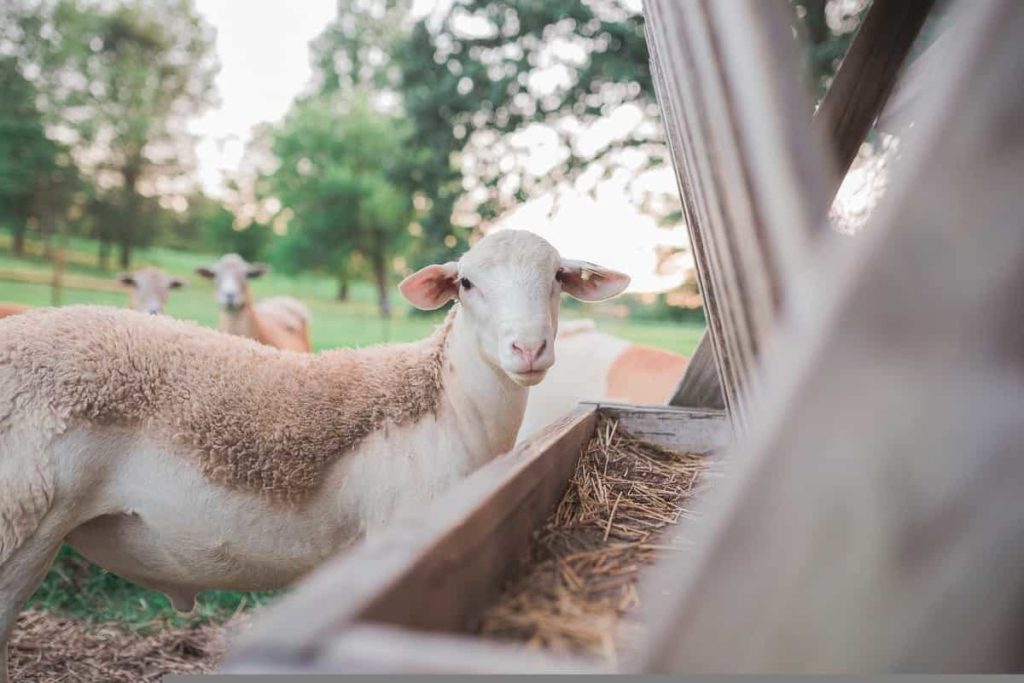
General recommendations:
- Provide clean water at all times.
- Provide salt and mineral mix at all times.
- Rotate pastures as needed.
- Monitor parasite levels.
- Observe the sheep daily when they are quiet. Sick sheep are easy to spot at this point, and early detection is critical to preventing or recovering from the disease.
- Always use the pasture for hens if possible. High-quality forage is essential during flushing and lactation.
- Keep good records and use them in making management decisions and selecting replacement parts. Create a herd health program with the help of your veterinarian.
Tips for profitable sheep farm management
- For better profits, you should follow modern and scientific sheep farming principles. Learn everything related to the sheep rearing business.
- Sheep selection and purchase, gestation, lamb care, weaning, housing and shelter management, slaughter, record keeping, identification, dipping, health management, etc., play a vital role in commercial sheep farming.
- Pasture – Make sure the pasture supports the number of sheep you choose, and sheep will spend about 7 hours a day grazing. These times change based on the size and condition of the sheep (lambs with lambs), the condition of the pasture (tall fescue grows rapidly in the spring and fall), and how you manage your pasture. Pasture sizes vary based on locality, climate, maintenance, type of planting, and rainfall. For example, Dry, rocky conditions will require more pastures to provide more grass.
- A healthy breed of sheep should be selected. Take some extra care for sheep feed.
- There should be proper marketing to earn maximum profit. First, determine your marketing plan.
- Avoid overfeeding your sheep’s grain – Grain is not good for sheep, except in a few specific cases because these mixes contain too much copper for sheep to feed. If you want to supplement your sheep’s diet with grain, try to get a mix specifically formulated for sheep. Eating too much grain can cause sheep to bloat and possibly die. So really avoid overfeeding grains.
Rules for financial assistance for sheep farming
Farm loans from banks with refinance facility from NABARD to start sheep farming. To avail bank loan, farmers should apply in the prescribed application form available at the financing bank branches at the nearest commercial, cooperative, regional rural bank, or small finance bank in their area.
A technical officer or manager attached to the bank can help/guide the farmers in preparing the project report for obtaining bank loans. Detailed reports will have to be prepared for large-scale sheep development schemes. For high-value projects, borrowers can avail of the services of NABARD Consultancy Services (NABCONS), which has extensive experience in preparing detailed project reports.
In case you missed it: Meat Sheep Breeds, List, and Advantages
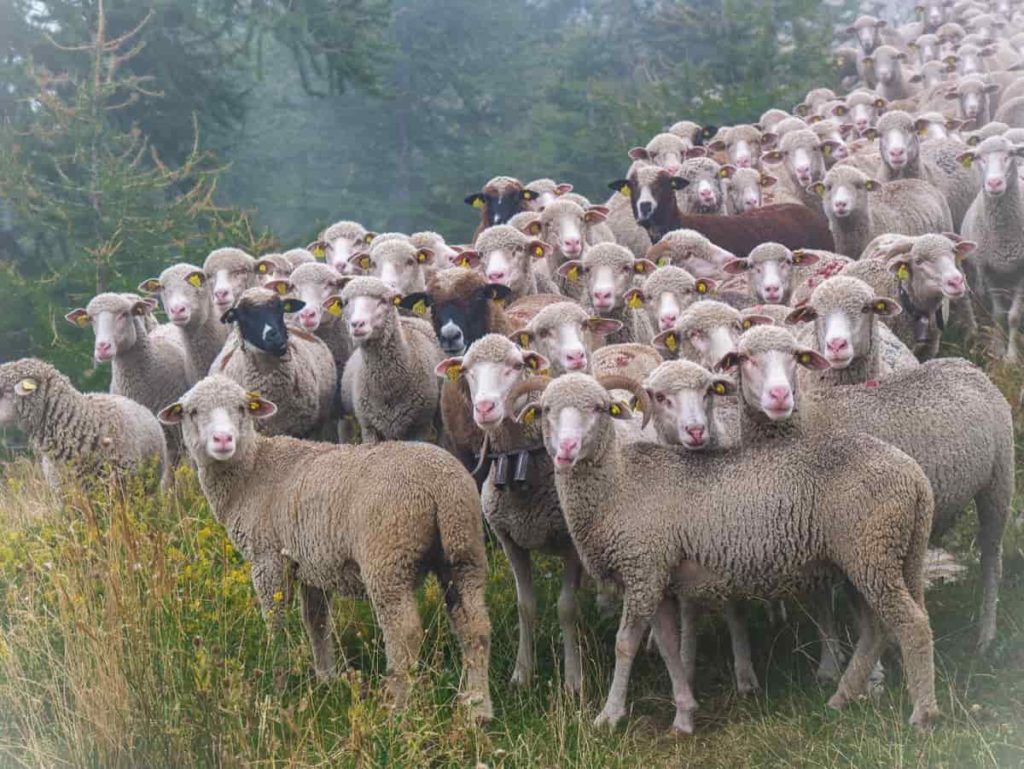
Marketing strategies for sheep farming
For marketing, the best would be to try the local livestock market. Also, find the marketing strategies before starting the business. The international market can be considered if you have adequate facilities. There is a good demand for sheep products in the international market. There is an excellent opportunity to earn foreign exchange by exporting sheep products. It will also directly increase the national income. Poor people can earn extra income by rearing sheep on a small scale.
Conclusion
Sheep farming contributes to the livelihood of many small and marginal farmers and landless laborers. A large number of rural industries use wool and sheepskin as raw materials. In this sheep business and management section, you will find useful information to improve your sheep management.
- Economical Aquaculture: A Guide to Low-Budget Fish Farming
- 15 Common Planting Errors That Can Doom Your Fruit Trees
- How to Make Houseplants Bushy: Effective Tips and Ideas
- Innovative Strategies for Boosting Coconut Pollination and Yield
- Pollination Strategies for Maximum Pumpkin Yield
- The Complete Guide to Chicken Fattening: Strategies for Maximum Growth
- Natural Solutions for Tulip Problems: 100% Effective Remedies for Leaf and Bulb-Related Issues
- Revolutionizing Citrus Preservation: Towards a Healthier, Greener Future
- Natural Solutions for Peony Leaf and Flower Problems: 100% Effective Remedies
- Maximizing Profits with Avocado Contract Farming in India: A Comprehensive Guide
- Natural Solutions for Hydrangea Problems: 100% Effective Remedies for Leaf and Flowers
- The Ultimate Guide to Choosing the Perfect Foliage Friend: Bringing Life Indoors
- From Sunlight to Sustainability: 15 Ways to Use Solar Technology in Agriculture
- The Ultimate Guide to Dong Tao Chicken: Exploring from History to Raising
- The Eco-Friendly Makeover: How to Convert Your Unused Swimming Pool into a Fish Pond
- Mastering the Art of Delaware Chicken Farming: Essentials for Healthy Backyard Flocks
- 20 Best Homemade Fertilizers for Money Plant: DIY Recipes and Application Methods
- How to Craft a Comprehensive Free-Range Chicken Farming Business Plan
- Brighten Your Flock: Raising Easter Egger Chickens for Beauty and Bounty
- How to Optimize Your Poultry Egg Farm Business Plan with These Strategies
- Subsidy for Spirulina Cultivation: How Indian Government Schemes Encouraging Spirulina Farmers
- Ultimate Guide to Raising Dominique Chickens: Breeding, Feeding, Egg-Production, and Care
- Mastering the Art of Raising Jersey Giant Chickens: Care, Feeding, and More
- Ultimate Guide to Raising Legbar Chickens: Breeding, Farming Practices, Diet, Egg-Production
- How to Raise Welsummer Chickens: A Comprehensive Guide for Beginners
- How to Protect Indoor Plants in Winter: A Comprehensive Guide
- Ultimate Guide to Grow Bag Gardening: Tips, Tricks, and Planting Ideas for Urban Gardeners
- Guide to Lotus Cultivation: How to Propagate, Plant, Grow, Care, Cost, and Profit
- Agriculture Drone Subsidy Scheme: Government Kisan Subsidy, License, and How to Apply Online
- Ultimate Guide to Raising Araucana Chickens: Breed Profile, Farming Economics, Diet, and Care
- Bringing Hydroponics to Classroom: Importance, Benefits of Learning for School Students
- Ultimate Guide to Raising Polish Chickens: Breed Profile, Farming Economics, Diet, and Care
- Ultimate Guide to Raising Australorp Chickens: Profile, Farming Economics, Egg Production, Diet, and Care
- Silkie Chicken Farming: Raising Practices, Varieties, Egg Production, Diet, and Care
- Sussex Chicken Farming: Raising Practices, Varieties, Egg Production, Diet and Care
- Homemade Feed Formulations for Livestock: Discover Cost-effective Starter to Finisher Feed Recipes